Legacy Stories
Patrick Anderson
Patrick Anderson was kind, compassionate, adventurous, and magnetic. A North Carolina native and Appalachian State University student, Patrick died by suicide in 2019 at just 19 years old. In trying to understand what led to his death, Patrick’s mother LeeAnn Anderson learned his history of brain trauma may have played a role. While suicide is a complex tragedy influenced by subtle, intertwined risk factors, research continues to show a connection between concussion and suicide risk.
LeeAnn is sharing Patrick’s story to raise awareness about the need for research to more fully understand the mental health challenges caused by concussions and the connection between brain trauma and suicide risk.
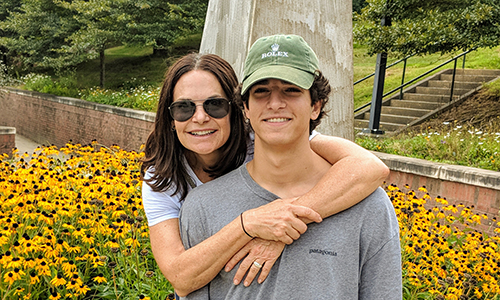
Click here to donate to the Anderson family fundraiser in memory of Patrick Anderson.
A HISTORY OF BRAIN TRAUMA, AND THE DEATH OF OUR JOYFUL BOY
By LeeAnn Anderson

My earliest recollection of glimpsing Patrick’s true nature; mischievous jokester, lover of life, occurred at age three. Patrick decided it would be funny if he peed off the upper floor landing while his sister and I were standing in the hall on the first floor. He was giggling and grinning from ear to ear. Seconds after the shockwave came and went, the three of us were crying with laughter. Patrick could be so random! Like the time in high school he asked his friend to pull over while driving through a local park. Patrick jumped out of the car and ran over to a group of folks playing a giant game of Jenga. Without stopping or saying a word he tackled the game pieces rolled across the grass and trotted back to his friends! The video is hilarious. The shockwave for those folks lasted a little longer than a few seconds, his friends are in the car busting a gut! Making people laugh was Patrick’s passion.
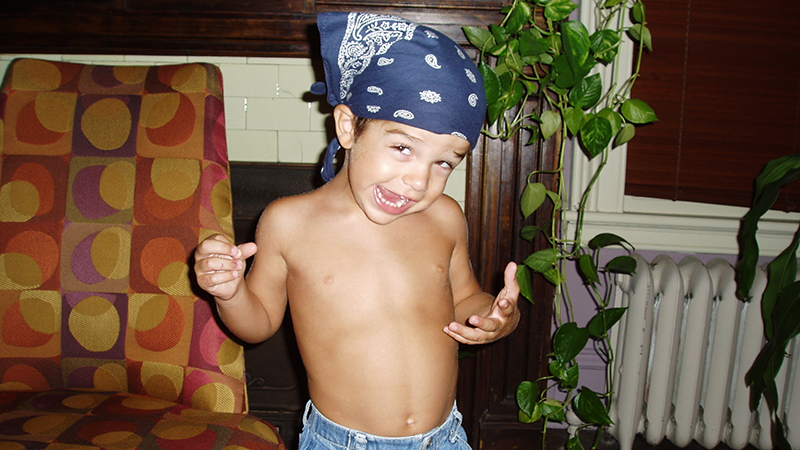
Patrick was beautiful. Kind and compassionate, he made friends easily. Patrick approached strangers like he wanted to be treated; with a smile, eye contact and a warm handshake. He didn’t see the color of their skin, or the clothes they were wearing, he saw the individual. Patrick was also blessed with natural physical abilities, instinctively aware of his physical boundaries from a very early age. “Monkeyboy” was his acquired nickname as he would literally climb anything deemed manageable by his young persona, which was most things. We were a good match, my parenting style encouraged discovery. If he felt physically capable of a feat, I rarely ever told him no. Believing in the “Art of Possibility” to build confidence in my children, I trusted their internal instincts.

As Patrick grew older, he ventured into team sports but also had a passion for solo sports. Skimboarding was a favorite from an early age, he eventually acquired the skill to backflip off his skimboard while taking a wave. For obvious reasons this practice was not my favorite. In elementary school a skateboard was his favorite mode of transportation. Confidence, independence, and comfort in his own skin were all traits Patrick displayed from an early age. Patrick played football in the fourth and fifth grade. Being on a team with all African American boys, Patrick learned how it felt to be isolated, how it felt to be the kid that looked different. Navigating “how do I fit in” was an incredible lesson that Patrick never forgot. Patrick was loved by his teammates and he loved them back; he became their friend, their brother. The Tigers won the city championship two years in a row! When my sister asked him in middle school why he didn’t play football anymore he said, “it made my head hurt.”
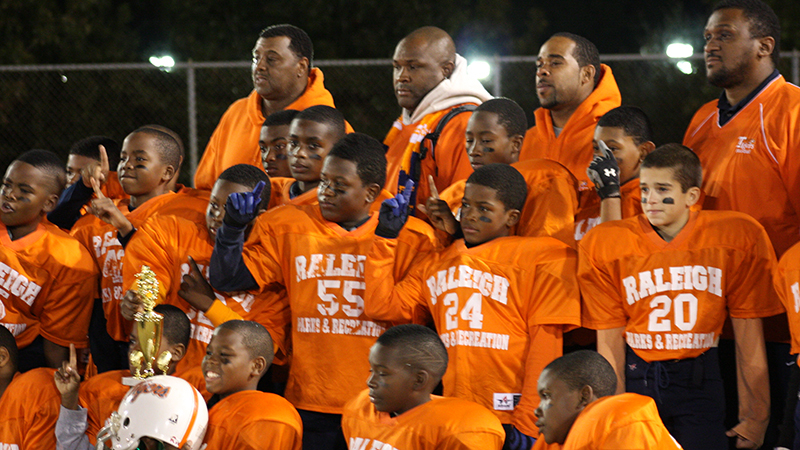
Patrick started kiteboarding and wakeboarding when he was 13, but his favorite was snowboarding which he started when he was nine. I’ll never forget the look on his face the first time I took him up to Peak 8 in Breckenridge. When he saw the drop into the bowl for the first time, he looked at me like I was the crazy one. I looked him in the eye and told him, “you have this, just follow me and you'll do great.” Not only did he do great, he was hooked.
Patrick was my adventure buddy. We were adrenaline junkies. From the time he was little, it was always the two of us on family vacations jumping off cliffs/waterfalls and my husband and daughter watching and taking pictures.
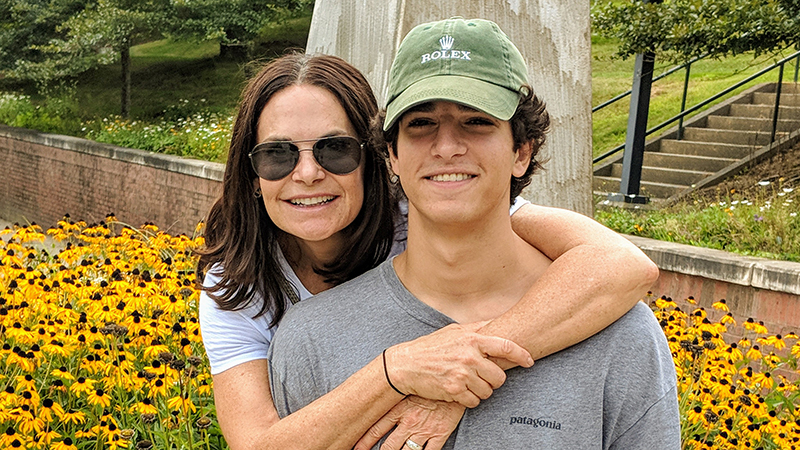
Patrick didn’t just have friends; he had a tribe. Kids naturally gravitated towards his non-judgmental attitude. His kind, compassionate nature along with his sense of humor and thirst to find the possibilities in every day was like a light to a moth. Kids were always at our house. The older he got the bigger the group became. I loved having them. Now that Patrick is gone, there is a quietness about the house during the months that he would naturally be home. It’s weird and it takes some getting used to. I play music to keep it from being so noticeable.
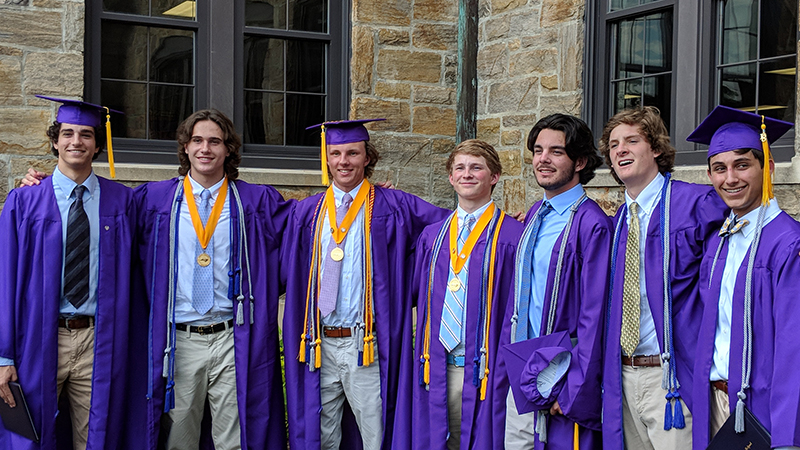
A HISTORY OF CONCUSSIONS
When Patrick was a sophomore in high school, he received his first diagnosed concussion. He was running and somehow tripped and hit his head on a concrete parking lot curb. Banged up pretty badly, we took him to urgent care, then to a private doctor the next day. His lacrosse coach was notified and concussion protocol was followed. Two weeks later he was cleared to practice and play with the team. He complained of headaches from time to time but when I took him to the doctor everything checked out OK. If I knew then what I know now, I would have taken him to a doctor who specializes in concussions.
Patrick’s senior year, he was sucker punched while trying to pull a boy off one of his best friends during an attack. It was dark and Patrick didn’t see the other kid coming. At 6’ 1”, Patrick fell backwards hard and was knocked out cold. Another boy who was there said Patrick was unconscious for about a minute.
A third concussion occurred the summer before he started his freshman year at Appalachian State University. Patrick and friends were wakeboarding on a trip to the beach, he wiped out, and the board hit him in the head. He was unconscious in the water for a few seconds. He didn’t go see a doctor after this incident and didn’t make us aware that it even happened until much later in the summer. We found a prescription for Ibuprofen amongst his things, he apparently was still having headaches from time to time.
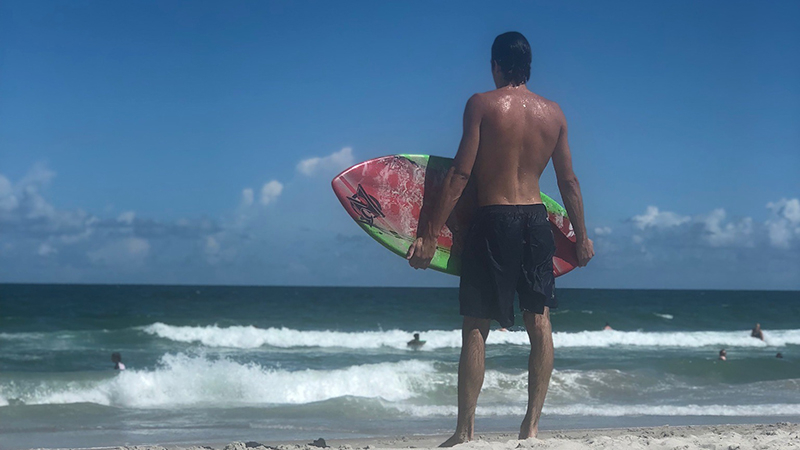
The last day Patrick was alive was Valentine's Day 2019. This seems appropriate to me given his ability to love deeply. Other than being Valentine's Day, it seemed to be a normal day for him at school. We texted back and forth, I sent him $50 and a funny pair of socks for the holiday. My husband talked to him several times that afternoon. He sent a funny picture of himself wearing protective goggles during a routine medical exam with a goofy smile on his face like he was in mid laughter! He put his deposit down on his apartment for the following year and he paid for his spring break trip.
Later that evening Patrick met up with his friends at the “cabin,” a regular hang out spot in Boone, NC. On his way out of the dorm, he ran into his good friend Hannah. She said they chatted for several minutes, caught up, and exchanged hugs before Patrick began his walk.
That night, the boys without girlfriends hung out, drank a few beers, started goofing around and being silly. At some point they started to joke-wrestle with each other. Patrick and another boy ended up falling over the porch railing and down a slight hill. They both said they were OK and the fun resumed. At 10:30 p.m. Patrick asked a girl to an upcoming formal, she said yes. Being a school night, the boys disbanded around 11:30 p.m. Patrick was there with his very best friend Palmer, who he said goodnight to and then walked back to his dorm alone.
There is video footage of Patrick walking into the dorm at 12:10 a.m. His roommate JT wasn’t yet home, he had fallen asleep in another friend's dorm room. Video footage shows JT entering the dorm at approximately 3:00 a.m. Two minutes later 911 was called. JT tried to revive Patrick but he was gone.
No note, nothing in a text message, or email. Nothing in his sketchbook, no dark poetry. The police interviewed over 20 kids, not one said they noticed that Patrick was different, withdrawn, not himself. We, his family, had just spent 10 days in Belize over Christmas break. My husband bought us all tickets to go see Justin Timberlake in concert. We went to see the latest Marvel movie, Patrick’s favorite. Spent time just hanging around the house together. Everything seemed normal.
So, what happened? Why did this carefree kid, who loved his family, had multiple tribes, and felt blessed to be a part of this college experience at App State suddenly end his life?
This doesn’t make any sense. I realize that suicide survivors often say the same thing about their loved one that has passed. I strongly feel something is out of place. Intuitively, I would have known something was going on with Patrick. We were too close, there is no way I wouldn’t have felt an underlying pain if Patrick was hiding something.
BRAIN TRAUMA AND PATRICK: WHAT MIGHT HAVE HAPPENED.
Concussions, brain trauma and CTE had recently come into focus as more and more research, documentaries, and athletes stepped forward. With that in mind, my focus started to shift to Patrick’s past concussions and the fall he took the night he died. I remember thinking, the fall must have been significant because several of the boys mentioned it to me the day of his service. Was it possible that he hit his head that night during the fall and reinjured a part of his brain that had been previously damaged? While he was alone in his dorm room in the middle of the night did his brain experience an aneurism, did it short circuit somehow?
I connected with several psychic mediums to try and find answers. Through that process, I was able to communicate with Patrick and learn he felt very intense pressure deep in his head that night. He couldn’t process how dangerous his actions were and thought an escape from the pain would mean sleep, not death. This revelation was incredibly significant.
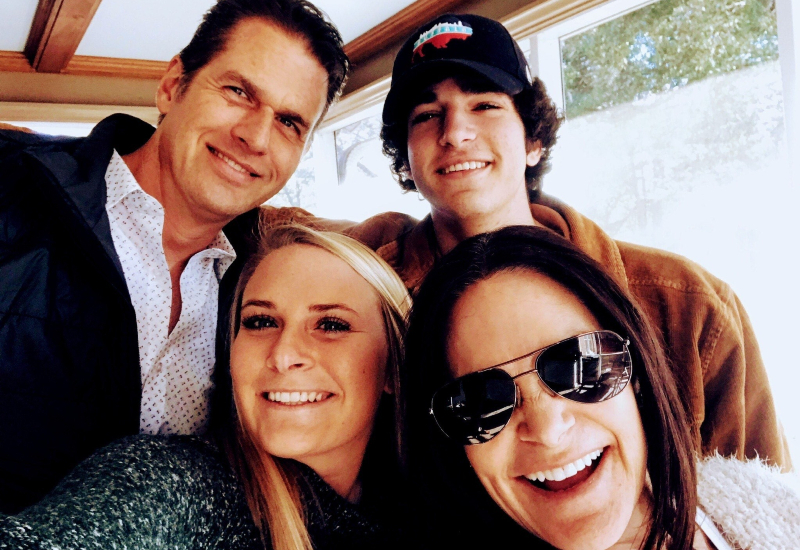
My goal in sharing my journey in connecting with my son after his death is to highlight the connection between brain trauma and suicide. Studies show suffering just one concussion doubles your risk of suicide. Even without any history of depression or observable changes in mood, it’s important for everyone to understand the potential link. Patrick wasn't depressed, he was hopeful and full of life. Something happened in his brain that night that can't fully be explained, not yet. My hope is there will be more research and more questions will be asked like, did the deceased recently experience a fall that could have damaged their brain? Was the deceased healing from a recent concussion? Unless this knowledge is documented, how can it be researched? How will we as a society be aware of the danger without awareness and education?
Click here to donate to the Anderson family fundraiser in memory of Patrick Anderson.
Suicide is preventable and help is available. If you are concerned that someone in your life may be suicidal, the five #BeThe1To steps are simple actions anyone can take to help someone in crisis. If you are struggling to cope and would like some emotional support, call the National Suicide Prevention Lifeline at 1-800-273-8255 to connect with a trained counselor. It’s free, confidential, and available to everyone in the United States. You do not have to be suicidal to call.
Are you or someone you know struggling with lingering concussion symptoms? We support patients and families through the CLF HelpLine, providing personalized help to those struggling with the outcomes of brain injury. Submit your request today and a dedicated member of the Concussion Legacy Foundation team will be happy to assist you.
This story adheres to the Recommendations for Reporting on Suicide from reportingonsuicide.org
Suicide Prevention Resources

Nobody should have to go through a crisis alone. Dial 9-8-8 if you or a loved one is in crisis or suicidal.
Suicide Prevention Lifeline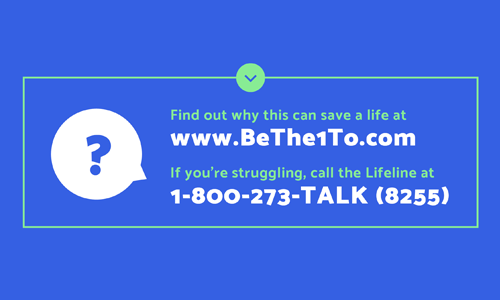
We can all play a role in preventing suicide. Learn the five steps to help you #BeThe1To support someone in crisis.
#BeThe1To Resources